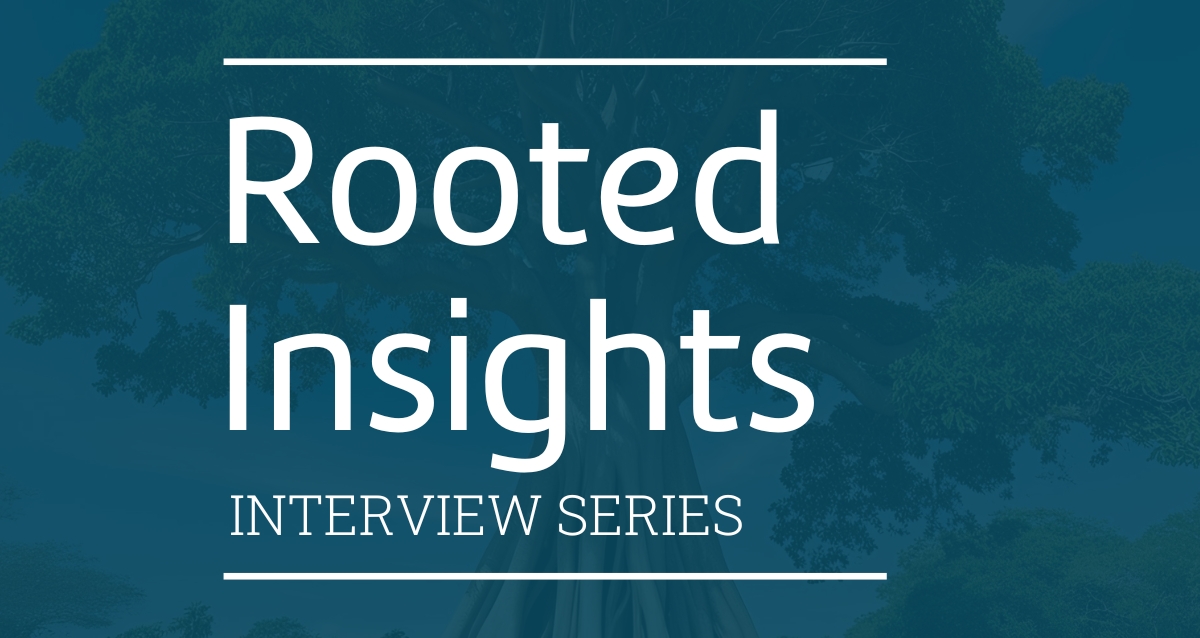Rooted Insights
with William Hartman, MD
with William Hartman, MD
A Cuppa Coffee with William Hartman, MD
The Evolution and growth of clinical trials
Onward Academic Partners met with William Hartman, MD to discuss his background as it relates to clinical trials. Clinical trials remain an important part of the research industry. Many academic medical centers struggle with this area financially and operationally. Given his experiences, Dr. Hartman provides unique and thoughtful perspectives on this topic. He is an accomplished researcher who has successfully led several clinical trials at the University of Wisconsin-Madison.
Dr. William Hartman is a Staff Anesthesiologist at University of Wisconsin School of Medicine and Public Health. He has 14 years experience working as a clinical anesthesiologist. His has an academic interest and specialization in clinical trials.

Dr. William Hartman
How has the historic lack of diversity in clinical trials impacted the health of minority groups?
That’s a wide-ranging question with multiple variables at play. Traditionally, clinical trials have been dominated by white males as participants. This group was the population most widely tested whether it was for treatments or procedures. Because this has been happening on for 100 years or more, it’s difficult to quantify how it has impacted diverse populations. Available treatments were mostly studied within a white population. Is that going to impact a woman who comes from a different background? Genetics, environment and socioeconomic status all influence health in various ways and those variables have not always been appropriately represented in our research. Treatments that are most successful for white populations may not be the best option for other groups. We don’t know how the lack of diversity affected treatments because these groups haven’t yet been incorporated into our research to produce meaningful data and insights. I would estimate the impact to be significant. As we advance our efforts in the area of clinical trials, I would anticipate our work to not only provide improved access to care, but also improve care and treatment options among a more diverse set of populations.
What progress have you seen during your time as a physician?
There has been increased focus on getting equitable care to more people. The marketplace greatly reduced the number of uninsured people in the U.S. and made healthcare more affordable through tax credits. We are closer to a world where we have reasonable healthcare for everybody, but there is still progress to be made.
As a clinical trialist and researcher, my focus is on building awareness, recruitment and enrollment in clinical trials. Historically, there was never a concentrated focus targeting diverse populations as part of clinical trial recruitment. Starting with Covid, when we did clinical trials at an accelerated pace and needed to recruit large groups of people, there were mandates to recruit specific segments of community members so that the populations of the trials reflected the populations of the cities we live in.
As a result of that direction, we saw increases in populations of people of color that we hadn’t seen before. That’s just a more recent development in the last 5 years, but it’s certainly a signal that we are moving in the right direction. In that sense, the approach we took with Covid clinical trials will have a positive impact in our research moving forward.
Did COVID teach clinical researchers anything new about this topic? Was there anything that surprised you personally in your work at the University of Wisconsin?
Before COVID, I had only been at UW Health for approximately 5 months. I was responsible for several clinical trials including the vaccine trials for adults and kids. You knew right away that the normal population of white men and some white women participating in clinical trials wasn’t going to be sufficient. Black people were dying from COVID early on at a rate much greater than other populations. As a result, we needed to recruit as many people from as many different backgrounds as we could into clinical trials in a short period. One immediate challenge was engaging with various populations that were already skeptical of clinical trials because they hadn’t been overly kind to them over the years, especially to black people. I had to reach out to the communities myself. Being a middle-aged white male, I didn’t know what kind of impact or response I would receive. In Madison, there are certain leaders such as Aaron Perry who started the barbershop clinics in Madison. He works every hour of every day to try to improve the health of black men. He welcomed me in to give some talks within his barbershop community and speak with black men directly to address any questions or feedback that had about the process. The podcast “Black Like Me” welcomed me in and we had a highly engaging discussion about diversity in clinical trials and the value of including diverse groups in this type of work. Working with these leaders who helped train me—the amount of coaching that I took from them helped me engage with a more diverse population for clinical trials. I also tried to have as many diverse populations represented on my research team. I wanted my team to look like the community so people recognize people like themselves running these trials.
What actions have you seen pharmaceuticals and hospitals take to design and promote clinical research studies to more diverse patient populations?
Moderna was the leader in engaging with a diverse set of patient populations and making it part of their clinical trial protocols. They mandated you would have certain percentages of different populations represented in a trial at your site. A lot of this was directed by both the CDC and the FDA. Other companies, like Pfizer, followed suit. As we design new trials, we all take this into account.
A significant portion of the information we gathered for the vaccine trials came through a phone application. As part of this process, we needed to ensure that our communities had access to the internet and mobile devices. In some instances, we provided them with phones, and in others, we arranged transportation, particularly for plasma donations. We faced many social determinants of health (SDOH) factors I had never thought about initially. Many socioeconomic factors that play into the difficulty in clinical trials, including
- Transportation
- Child care
- Internet and phone access
These are all variables we had to work through in this process and factor into both the timeline, recruitment efforts and budget.
Where do you see AI fitting into diversity in clinical settings going forward?
That’s another challenging question to answer given the pace of technology and how it evolves given what we learn each day, week, month and beyond. AI is working its way into several different parts of medicine to help interpret results. I believe it will help us target populations that we need, to help work as a background oversight source that will make sure we are meeting what is needed for the trials and to make sure everyone is represented appropriately. It will also give us real-time data and results so we can determine is more effective for one population than another.
AI is very good at efficiently synthesizing complex data. It will make a significant impact and will be integrated into our approaches moving forward. There will continue to be new tools and applications, but we will continue to learn and use technology where appropriate.
What 2-3 investments would you make if you wanted to broaden patient enrollment overall at a hospital or physician group?
One investment would be to train more people to be trial coordinators so we have a more diverse population of people to do the work. I strongly believe it matters to have people of different backgrounds engaging with trial participants to better establish a level of comfort and trust. Training people from diverse populations is very important.
Another important investment is developing the infrastructure for the populations you’re targeting and making sure they understand why these trials are important for them. We want to make sure they have the technology to participate in these trials. If you tell people how to participate but they don’t have a phone or good internet access, then you haven’t accomplished anything. This type of investment in community infrastructure is critical to engagement and capturing the data we need to improve care options.
Lastly, I believe there needs to be a better way to communicate results to the community. We need to find better ways to tell people this is what these studies show, you were a part of this, and these are the fruits of your labor. We still struggle to get back to people and explain our trial findings. Improving that communication and thanking people, letting them know the difference they made, is important and something that has been neglected for too long.

Rooted Insights is an engaging interview series that brings you candid conversations with some of the most dynamic leaders in academic medical administration. Over the years, I’ve had the privilege of learning from and collaborating with these remarkable individuals, and now, we’re sharing their insights and experiences directly with you.
Each interview offers a concise yet impactful perspective on timely and relevant issues in their area of expertise across academic medicine. Whether seeking new ideas, professional inspiration, or development guidance, these conversations are designed to spark your curiosity.
If you’d like to dive deeper, please contact me directly and we can continue the conversation.
Site back and enjoy this series!

